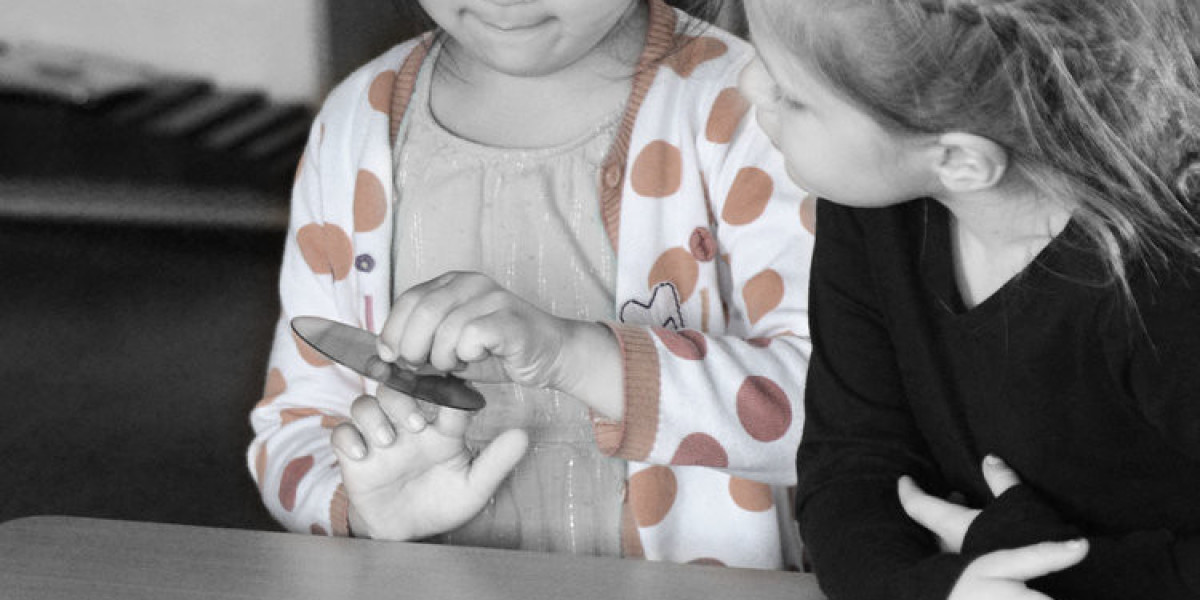According to Maria Montessori, “play is the work of the child.” She thought playing was super important for learning in her special way of teaching called Montessori. Montessori teachers and fans believe that when kids play, they're actually learning a lot. They get to explore and mess around with stuff, which helps them learn without even realizing it!
Toys in a Montessori classroom are meant for learning. These toys fall into two groups: close-ended and open-ended toys. Close-ended toys usually have one specific way to play with them, while open-ended toys let kids use their imagination and play in lots of different ways.
But which type of toy is better for your child? Well, in Montessori classrooms, they mostly go for open-ended toys. That's because these toys let kids be creative, solve problems, and have fun making up their own games. It fits perfectly with the idea that kids should be able to learn by exploring and trying things out on their own.
What Are Close-Ended Toys?
Close-ended toys are those toys that have one specific purpose and have a specific way for the child to use them. This type of toy is typical in a Montessori setting (classroom or home). A few examples of close-ended toys are puzzles, tracing materials, picture-matching toys, knobbed cylinders, and more.
Before a child is allowed to interact with these types of toys, they must first complete a lesson.
What are the benefits of using close-ended toys for a child’s learning?
The first benefit of close-ended toys is the ability to provide a sense of achievement for a child in their use of a toy. There is a clear purpose for interacting with that toy and it is empowering for a child to discover that purpose.
Another benefit of using close-ended toys is the improvement in concentration. A child that interacts with these toys needs to focus to overcome any challenges that would prevent them from achieving their purpose. When a child is “in the zone,” it means they are concentrating on the task at hand. This moment of concentration is valuable in a child’s development. As they repeat the process, they gain mastery of the material they are interacting with.
The ability to correct themselves is another advantage of using close-ended toys. A child will know if something is “wrong” with what they are doing if that prevents them from completing the purpose of the material. When they self-correct, they can accomplish and succeed in their goal.
There are other beneficial life skills that a child will develop in the use of close-ended toys, such as sequencing, ordering, and identification. While close-ended toys are designed for use in a particular way, it does not mean that they cannot be used in other creative ways. Make sure to encourage your child to find different ways to explore, too.
What Are Open-Ended Toys?
Open-ended toys are those toys that can be played with in different ways. The use of these toys unveils endless possibilities for a child since there are no rules and guidelines to follow. There is no right or wrong way of interacting with these toys, which creates an open-ended play experience.
Interacting with open-ended toys promotes creativity and imagination in a child. There are no rules, as mentioned above, so a child relies on their imagination for how to use these toys. Playing without any rules is also a freeing experience for a child. It encourages independent play since they are given space to be creative, explore, and engage in imaginative play.
Playtime in Montessori Learning
The importance of playtime in a Montessori classroom is one of the unique features of this teaching method. The characteristics of play in Montessori can be described as the following:
- Playtime is a process. You must encourage children to play for the sake of it. There is no result that you have to work for because engaging in play can facilitate learning. For example, a child that builds a tower of blocks is not engaging in this activity because they want to build a tower. They do this because they want to master building that tower using blocks.
- Imagination and reality are blurred. Children are naturally imaginative. They use their imagination when engaging with toys and objects. They have no distinction between imagination and reality, which opens up endless opportunities for them to be creative in interacting with toys and objects.
- Children make up their own rules. There are no rules when it comes to Montessori playtime. The child is the one who formulates their rules and promotes an understanding of the rules of society in their play environment.
- Play delivers a stress-free learning environment and is fun for children. Therefore, children who are having fun can absorb learning more effectively when they are not having fun. This is the primary reason why the Montessori approach to learning values playtime.
Close-ended toys are highly encouraged in the Montessori classroom. However, it does not mean that open-ended play is discouraged. Once a child has mastered the learning tools and resources, open-ended play can happen naturally.
SHIR-HASHIRIM MONTESSORI: LA’S BEST MONTESSORI PRESCHOOL SINCE 1985
Shir-Hashirim Montessori Preschool aims to offer practical assistance and support for parents seeking to help their children achieve their fullest potential. With 40 years of experience in nurturing young minds, the institution specializes in delivering essential academic and life skills through engaging and interactive approaches. Individuals are encouraged to contact Shir-Hashirim Montessori at their convenience for inquiries or to delve deeper into their programs.
Disclaimer: Shir-Hashirim Montessori maintains no sponsorship or affiliation with the brands referenced above. This informative blog serves the purpose of providing valuable insights into some of the finest Montessori toys on the market.














